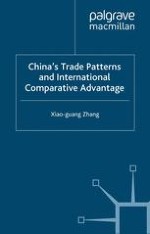2000 | OriginalPaper | Chapter
Tradable Goods Price Structure in China, 1978–95
Author : Xiao-guang Zhang
Published in: China’s Trade Patterns and International Comparative Advantage
Publisher: Palgrave Macmillan UK
Included in: Professional Book Archive
Activate our intelligent search to find suitable subject content or patents.
Select sections of text to find matching patents with Artificial Intelligence. powered by
Select sections of text to find additional relevant content using AI-assisted search. powered by
At the onset of economic reforms, China’s domestic price structures had diverged substantially from that of the rest of the world owing to 30 years of central planning and isolation. These distortions had resulted in a huge loss of allocative efficiency for the Chinese economy and hindered the opening up of the domestic economy. It was clear that the domestic price system had to be reformed and realigned with the rest of the world. After nearly two decades of intensive economic reforms, by 1995, 89 per cent of consumer goods and 78 per cent of producer goods were being sold at market prices (Editorial Board of the PYC 1996). However, the impact of economic reform on China’s domestic price structure has not been subject to rigorous empirical scrutiny. Although the magnitude of China’s domestic price distortions can be indirectly measured using data on the sectoral profit rates of Chinese industries,1 few attempts have been made to directly quantify the changes in the differentials between China’s domestic prices and the world prices at a commodity level.2
